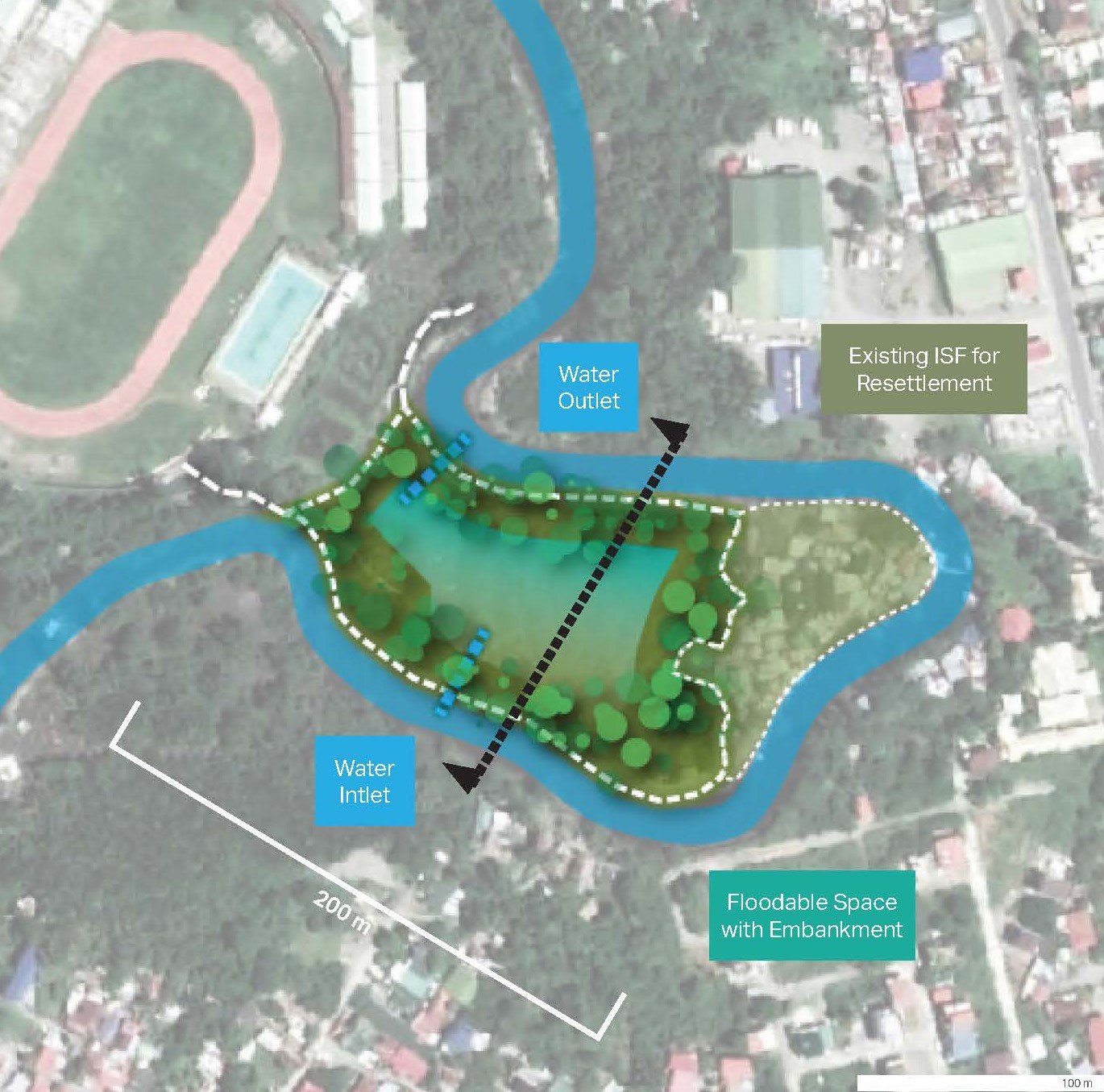
Calapan City
Oriental Mindoro
Calapan City straddles two watersheds with a topography marked by lakes and meandering rivers. The city is prone to flooding, which is now more pronounced with more frequent and more intense typhoons.
-
Typhoons and heavy rains usually flood the city, displace families near the rivers, and damage agricultural lands.
In 2005, most of the barangays in the city were flooded due to heavy monsoon rains and Tropical Depression Quedan. The combined volume of the rain caused the Bucayao dike to collapse. The city remained flooded for two weeks.
With the city-wide drainage system still in the planning stage, periodical dredging, desiltation and clearing of obstructions in Calapan River are undertaken to mitigate flooding.
Calapan City has already selected four potential sites along Calapan River where mitigation strategies can be employed.
-
Taking cues from Singapore, Calapan City has identified the promotion of the ABC (Alive, Beautiful, Clean) River Management and Development Program as one of its environmental development strategies.
Focusing on two sites selected by Calapan City, the green-gray infrastructure concept uses the existing open spaces as collection areas for excess runoff water during heavy rainfall thus reducing the flood level in the surrounding areas. These dedicated collection points can be designated as nature parks to enhance biodiversity and at the same time become tourist destinations at the heart of the city.
-
Rehabilitating Calapan River using green-gray infrastructure may unlock multiple benefits including:
• Reduce the impact of inland flooding
• Improve water quality
• Restore the riverine ecosystems and biodiversity
• Increase public park area per capita
• Generate jobs associated with eco-tourism
• Relocation of vulnerable informal settlements
Ultimately, the pilot can make a case for the municipality wide adoption of nature-based strategies to:
• Make the city inclusive, safe, resilient and sustainable
• Conserve Calapan’s river network and riverine ecosystems

Location Map

Site Options

Current state of Calapan River requiring rehabilitation

Concept Strategy Plan

Concept Strategy Blow-up Plan

Concept Strategy Section